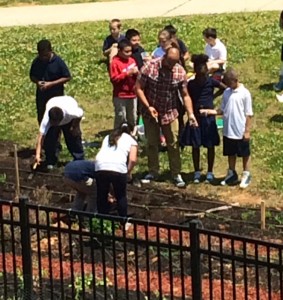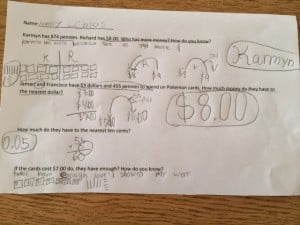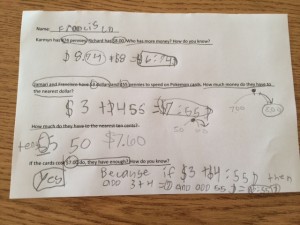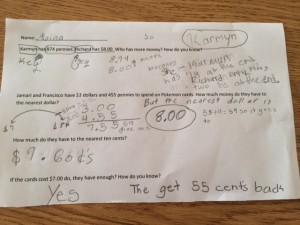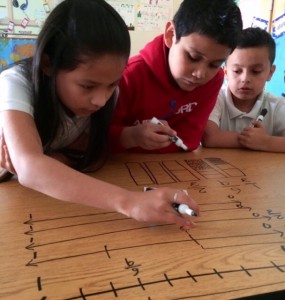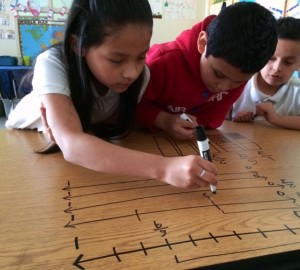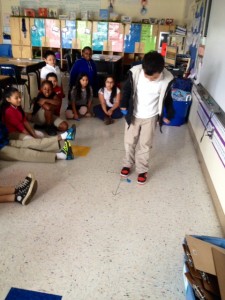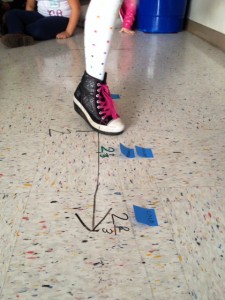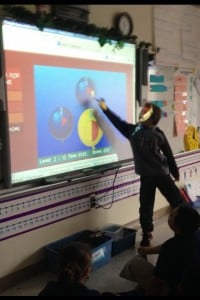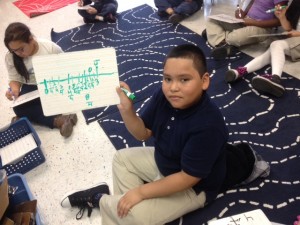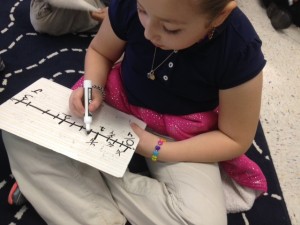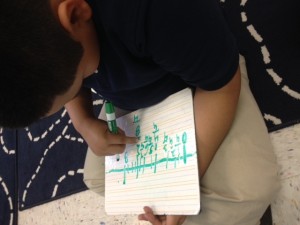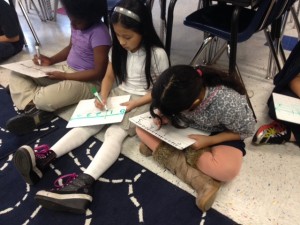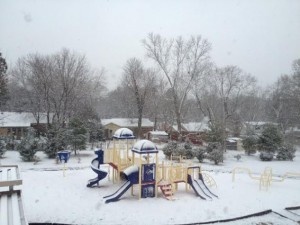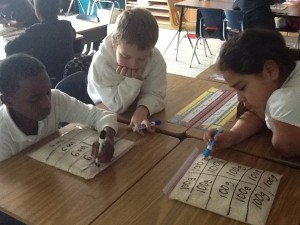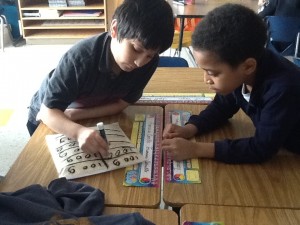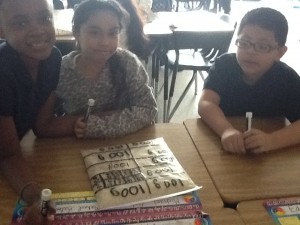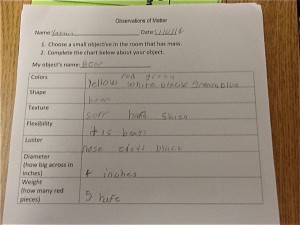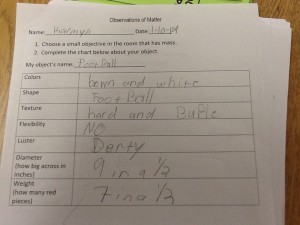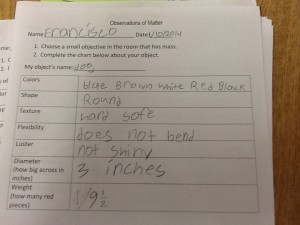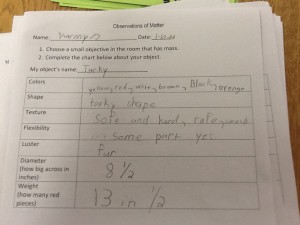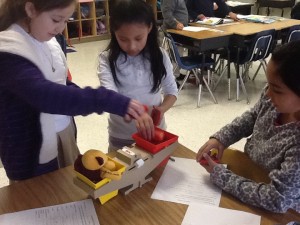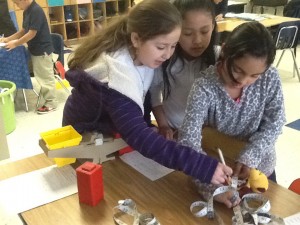Tag Archives: Yasmin
Show What You Know!
Yasmin blew us away yesterday, when she used an open number line to solve the following problem:
452 = n + 323
Her strategy was awesome and she was able to show and explain her work! Good mathematicians can always defend where they got their answer!
 Nancy, Francisco, and Alaina did a great job showing their work on the following word problems. I like how they used numbers and words to explain their thinking! Can you aspire to make your work like theirs? What strategies can you borrow from these learners?
Nancy, Francisco, and Alaina did a great job showing their work on the following word problems. I like how they used numbers and words to explain their thinking! Can you aspire to make your work like theirs? What strategies can you borrow from these learners?
Math in Action!
We took our whole class math block to a whole new level this week! We played “Agree, Argue, Aspire”, worked in teams and independently, took our fraction knowledge deeper, and capped it all off with multiplication Jeopardy! Our class was focused and engaged all week long, and you have made me so proud!
We studied Karmyn’s work on her practice EOG test. Check out how she tried three different strategies before getting an answer with which she was confident! Karmyn’s work showed us that she can truly persevere when things get tough. Her example gave us a lot to aspire to!
Don’t be afraid to try more than one strategy!
Never be afraid to start all over!
Here we are studying Karmyn’s work and deciding what we agreed with, what we wanted to argue with, and what we could aspire to do in our own work!
If you’d like to try out multiplication Jeopardy at home click on the picture below. Get your family involved! See if you can beat your siblings and parents! Remember your good sportsmanship. Even though the girls were our big winner our boys acted like true gentlemen!
Number line or Fraction Model
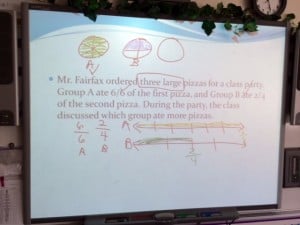 We have been looking at different methods of representing fractions so that we can picture them in our minds. Two strategies we have tried are, representing fractions on a number line and drawing out fraction models . Both strategies help us visualize the fractions we’re working with and make it very easy to see if two fractions are equivalent.
We have been looking at different methods of representing fractions so that we can picture them in our minds. Two strategies we have tried are, representing fractions on a number line and drawing out fraction models . Both strategies help us visualize the fractions we’re working with and make it very easy to see if two fractions are equivalent.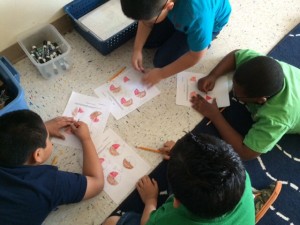
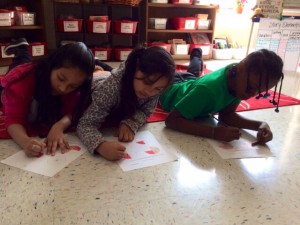

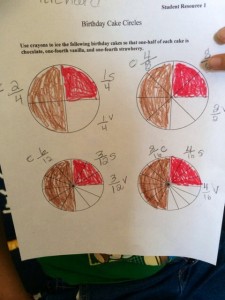
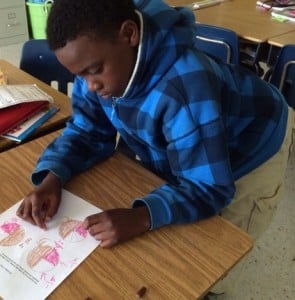
So, which method helps you visualize the fraction better, fractions on a number line or fraction models?
The “Fraction Cake” lesson the students are working on in the photos can be found here!
Rosie the Riveter Returns!
I noticed something interesting on my favorite nonfiction reading site for kids. Newsela.com is a great website that contains many current news articles written for students. When you click on the left of the site you can change the Lexile level of the article. A lower Lexile level will be easier to read and a higher level will be more difficult, probably on a middle school level. On Newsela I found this great article, The Original Rosie the Riveter had the Right Name for the Job! The article discusses the same Rosie we learned about in Andrea Beaty’s book, Rosie Revere Engineer! Take a few minutes to read and enjoy this article. Adjust the Lexile level on the left if the text seems too difficult or simple!
Here’s one of our favorite pages from Rosie Revere Engineer! (If you want to learn about powerful, smart women then check out this book!)
Fraction Long Jump!
“What’s all that noise?!” Mrs. Paul’s class wondered. It was the sound of 17 long jumpers comparing fractions. We started at zero on our number line and tried to see who could jump the most whole numbers. Alaina jumped the farthest for the girls, 2 whole spaces and 3/4 of the next space. Antwan jumped the farthest for the boys, 3 whole spaces and 1/8 of the next space! Most of us were able to jump over two whole spaces (and those of us who couldn’t did not have jumping shoes on today!) We are going to use our data to create a line plot graph. How should we organize the scale for our graph?
We will talk deeper about equivalent fractions tomorrow. Here is a quick video reminder of what we have discussed:
Exploring Fractions
We have been exploring fractions for the past 15 days (wow, that’s half of a month!) I think our favorite fraction activities involve chocolate bars! There’s no better way to explore twelves than with a delicious Hershey bar!
Today, we played a game that asked us to put fractions in order from smallest to biggest. Thinking about those candy bar pieces really helped us out! You can find this fraction game here!
Another Snow Day!
Hello Antwan, Nancy, Shannallie, Karmyn, Yasmin, and Ixell!
I had a feeling you’d be visiting the blog today when you took a break from playing in the snow (please remember to where hats and mittens!) Did anyone else visit today who I didn’t list? Let me know by leaving a comment!
Here are some word problems to keep your brain working on this very cold, winter day!
1. Antwan ran 444 yards in his first game playing football for Florida State. In his next game, Antwan, threw for 156 yards. How many yards total did Antwan move the football down the field?
2. Yasmin has 6 packs of crayons and each pack has 8 crayons. The crayons in each pack are red, yellow, blue, green, orange, purple, brown, and black. If Yasmin gives Karmyn one pack of crayons, how many total crayons will Yasmin have left?
3. Shannallie, Nancy, and Ixell ran 3 miles each day last week. If next week they plan to run 5 miles each day, how many miles will they each run after both weeks?
Leave your answers in the comments and I’ll come up with more questions just for you!
Here are some of my snowy day pictures from yesterday!
Second graders make it back to class through the Tuesday snow!
Wow! Our playground is covered in snow!
Pablo enjoys his first walk in the snow!
“Hey! I caught a snowflake on my nose!” – Pablo Cinco Felter

Pablo was very sleepy after playing in the snow!


